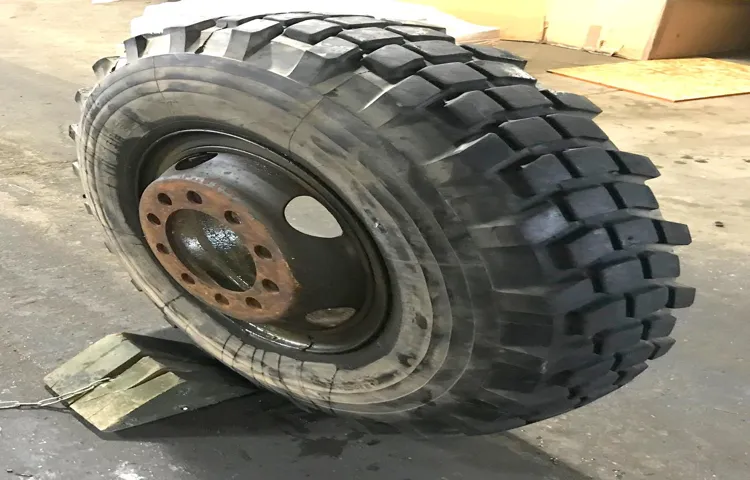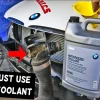Have you ever been shopping for new tires and come across the letters XL? It can be confusing to know what they mean and whether they are important when choosing the right tires for your vehicle. Fear not, we’ve got the answers for you. XL on a tire stands for “Extra Load” and it’s an indication that the tire is designed to support more weight than a standard tire of the same size.
Think of it like upgrading from a regular strength coffee to a 5-shot espresso, XL tires can handle the weight of a heavier vehicle or more cargo without compromising on safety. In this blog, we’ll delve deeper into what XL tires are, why they are important, and how to know if they are right for you. So let’s hit the road and find out everything you need to know about XL tires.
Table of Contents
The Meaning Behind ‘XL’
If you’re shopping for new tires, you may have noticed the letters “XL” on some of them, and wondered what they stand for. The XL designation on a tire indicates that it’s an extra load tire, designed to carry more weight than a standard tire of the same size. This can be important for vehicles that carry heavy loads, such as trucks or SUVs.
XL tires typically have a higher load rating than standard tires, meaning they can handle more weight per tire. It’s important to note that not all tires are available in XL versions, so make sure to check your vehicle’s specifications to determine if XL tires are appropriate. When it comes to what is XL on a tire, the answer is simple: it’s just an indication that the tire is rated for extra load capacity.
Extra Load Rating
When it comes to shopping for tires, you may have seen the acronym “XL” displayed on certain models. This stands for Extra Load, meaning the tire has a higher load-carrying capacity than standard tires of the same size. So what does this mean for you as a driver? The main benefit is increased safety.
XL tires are specifically designed to handle heavier loads, whether it be due to extra cargo or a larger vehicle. This translates to better handling, improved stability, and reduced risk of blowouts or tire failure. While XL tires may be slightly more expensive than standard tires, the added peace of mind is well worth the investment.
So, if you drive a larger vehicle or frequently carry heavy loads, opt for XL tires to ensure maximum safety while on the road.

Understanding Load Ratings
Load ratings are an important aspect to consider when selecting the right tire for your vehicle. One term that often appears in tire descriptions is ‘XL’, which stands for ‘extra load’. This means that the tire is designed to support a heavier load than a standard tire.
The XL designation can usually be found on the tire sidewall, along with other pertinent information such as its size and speed rating. Tires with XL ratings are typically recommended for vehicles that carry heavy loads or tow trailers, as they are better equipped to handle the extra weight. It’s important to note that XL tires may have a slightly rougher ride than standard tires, due to their stiffer construction.
However, the added load-carrying capacity can provide a safer and more comfortable driving experience overall. When selecting new tires for your vehicle, be sure to check the load rating and consider whether XL tires may be a better fit for your driving needs.
When is XL Necessary?
If you’ve ever wondered what the “XL” on a tire stands for, it’s actually quite simple. XL stands for extra load. This means the tire is designed to carry an additional amount of weight compared to a standard tire.
XL tires are often found on larger vehicles such as SUVs, trucks, and vans. The extra load capacity allows these vehicles to carry heavier loads without risking safety or damaging the tires. It’s important to note that not all vehicles require XL tires, so be sure to consult your vehicle’s owner’s manual or a tire professional to determine the proper size and load capacity for your specific vehicle.
Overall, if you’re frequently carrying heavy loads or have a larger vehicle, XL tires may be necessary for safe and efficient transportation.
Vehicle Weight
When it comes to determining whether an XL vehicle is necessary, the weight of the vehicle should be a primary consideration. Generally, XL vehicles are larger and heavier than standard vehicles, making them a better choice for hauling heavy loads. If you’re planning to transport equipment, cargo, or materials that exceed the weight limit of a standard vehicle, an XL vehicle is likely necessary.
But keep in mind that not all XL vehicles are created equal. They can vary significantly in weight and size, so it’s important to choose the right XL vehicle for your needs. Additionally, if you frequently transport large loads, but don’t necessarily need an XL vehicle for every trip, it might be more cost-effective to rent an XL vehicle on an as-needed basis, rather than buying one outright.
Ultimately, the decision to go XL should be based on your specific needs and circumstances. By taking the time to assess your needs, you can make an informed decision that ensures safe and efficient transportation.
Tire Size
Choosing the right tire size for your vehicle can be a daunting task, especially when it comes to determining if an XL size is necessary. The XL designation on tires stands for “Extra Load,” which means the tire has a higher load-carrying capacity than standard tires of the same size. If you frequently carry heavy loads or tow trailers, an XL tire may be the better choice for you.
Additionally, if your vehicle’s manual recommends XL tires, it’s important to follow that guidance. However, keep in mind that XL tires may come at a higher cost and could potentially affect your vehicle’s handling and fuel efficiency. It’s essential to consult with a trusted tire professional who can help you determine the appropriate tire size for your specific needs and budget.
So, before you make a purchase, make sure you have all the necessary information to make an informed decision and choose the right tire size for your vehicle.
Intended Use
XL is necessary when an individual or business needs a larger amount of space, memory or storage capacity than what is typically available in a standard size. This size is usually indicated by the letter “L” in the name or model number of the product. For example, a laptop with the designation XL might have a larger screen, more powerful processing capability or larger memory than a standard-sized laptop.
Similarly, XL products like printers, scanners or cameras would likely have higher printing quality, higher scanning resolution and higher pixel resolution respectively. XL products are usually designed for professional use or for individuals who require specialized feature sets. So, if you are someone who is into graphic designing, video editing or any other profession that requires large software tools or storage spaces, an XL device will be a better investment for you.
Replacing Tires with XL Rating
If you’ve ever looked at your car or truck tires and seen the letters “XL” on them, you might be wondering what that actually means. XL stands for extra load and is a type of tire rating that denotes a higher weight capacity than standard tires. This is important because vehicles with heavy loads or those used for commercial purposes need tires that can handle the extra weight.
XL tires are typically made with thicker, sturdier materials that can withstand the wear and tear of heavier loads and driving conditions. If you are considering replacing your tires with XL rated ones, it’s important to ensure that they are compatible with your vehicle and meet its specific weight and load specifications. As always, consult with a tire professional to ensure that you are making the right choice for your vehicle and driving needs.
Safety First
When it comes to replacing your car’s tires, safety should always be your top priority. One option to consider is upgrading to tires with an XL rating, which means they have an increased load capacity compared to standard tires. This can be particularly useful for larger vehicles or for those who frequently carry heavy loads.
Not only can XL tires provide better stability and handling, but they can also help prevent blowouts or other tire-related issues that could lead to accidents on the road. Don’t compromise your safety or that of your passengers by neglecting your vehicle’s tires – consider upgrading to XL tires for added peace of mind.
Match the Original Equipment
When it comes to replacing your vehicle’s tires, it’s important to match the original equipment. This not only ensures that your vehicle performs optimally but also keeps you and your passengers safe on the road. One important factor to consider is the XL rating of the tires.
An XL rating means that the tire can handle extra load capacity, which is crucial for vehicles that carry heavy loads or have a lot of passengers. So, if your original tires had an XL rating, it’s important to choose replacement tires with the same rating. On the other hand, if your original tires didn’t have an XL rating, it’s best to stick with the same load capacity or a higher rating to ensure proper performance of your vehicle.
By matching the original equipment of your tires, you can ensure a safe and comfortable ride on the road.
Conclusion
In conclusion, what is XL on a tire? Well, it’s not a reference to extra large sizes or a nod to the X-Men’s beloved Professor X. Rather, XL simply stands for “extra load” and it’s an indication that your tire has an increased weight capacity. So, the next time you see XL on your tires, feel free to flex your newfound knowledge and impress your friends with your tire savvy!”
FAQs
1. What does XL mean on a tire? A: XL stands for “eXtra Load,” meaning the tire can carry more weight than a standard tire of the same size. 2. What is the maximum load capacity for an XL tire? A: The maximum load capacity varies depending on the specific tire size and model. Check the manufacturer’s specifications for your specific tire. 3. Can XL tires be used on any vehicle? A: XL tires can be used on vehicles that require a tire with the same size and load capacity. Be sure to check your vehicle’s owner manual or ask a professional before switching to XL tires. 4. How do XL tires differ from regular tires? A: XL tires have stronger construction and sidewalls, allowing them to handle heavier loads and maintain their shape during high-speed driving. 5. Is it necessary to replace my standard tires with XL tires if my vehicle can handle the extra load? A: It’s not necessary, but if you frequently carry heavy loads or frequently drive at high speeds, switching to XL tires can provide better performance and safety. 6. Can XL tires affect my vehicle’s fuel efficiency? A: Yes, XL tires typically have a higher rolling resistance, which can decrease fuel efficiency slightly. However, the difference may be insignificant in practical use. 7. How can I tell if a tire is XL? A: Look for the letters “XL” or “Extra Load” on the sidewall of the tire, usually near the size designation.



